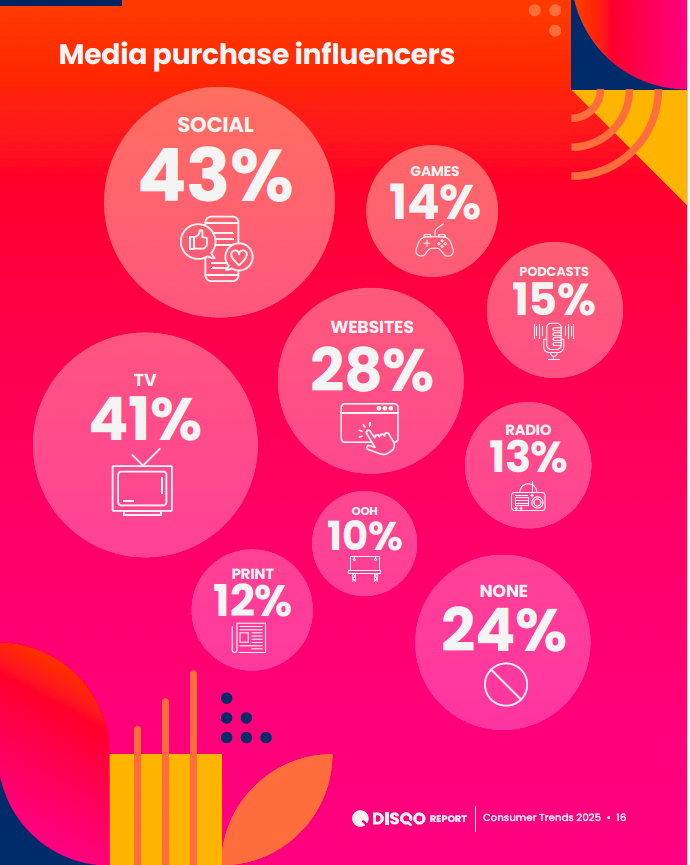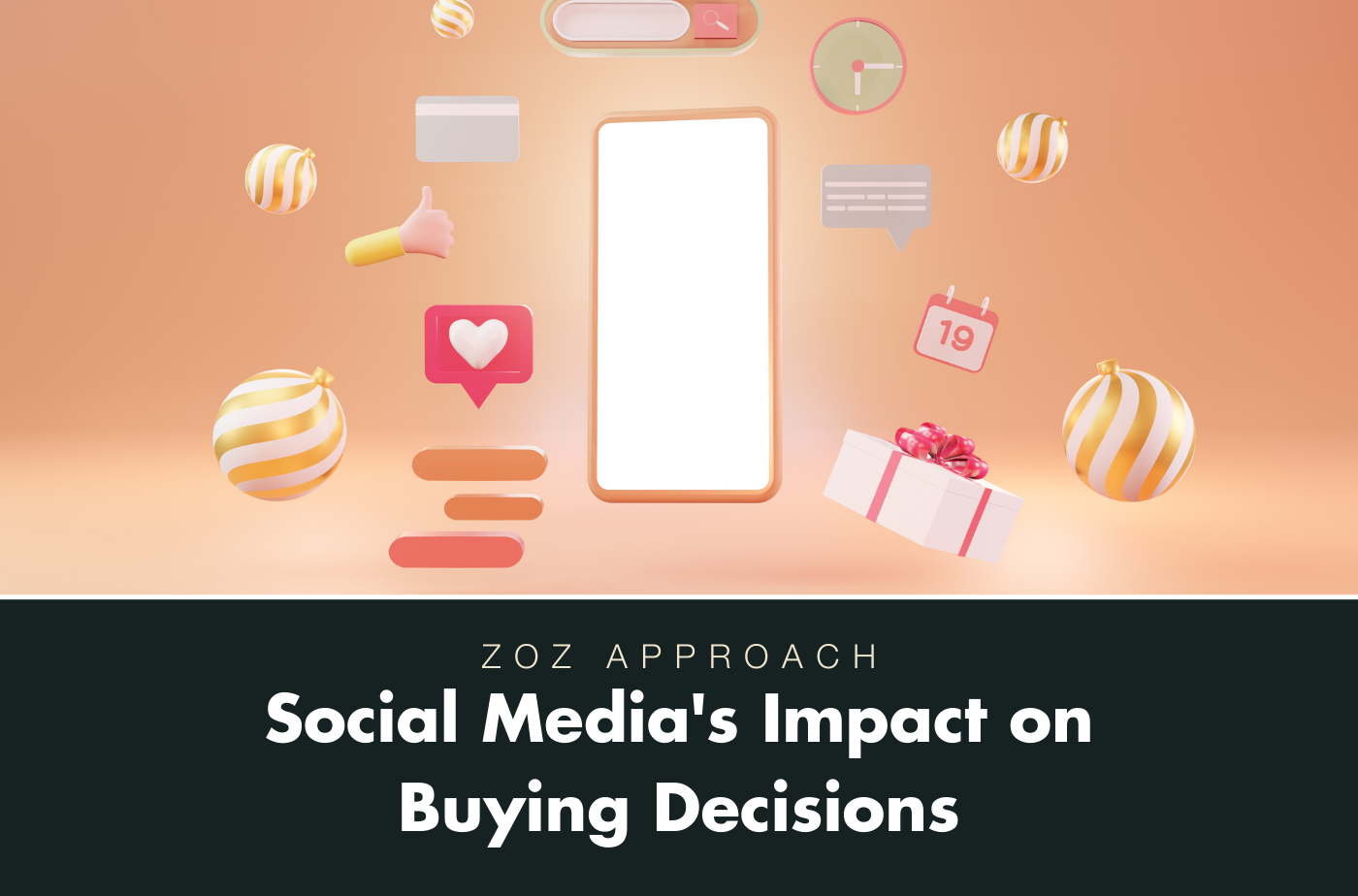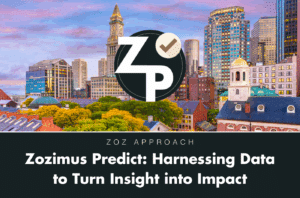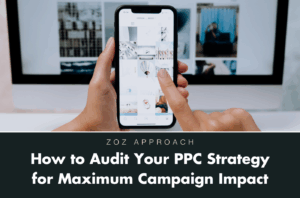Social media has emerged as a powerful force in shaping consumer behavior, with recent data underscoring its growing influence on buying decisions. In fact, social media has now overtaken television as the primary driver of purchases. In 2023, 43% of individuals reported that television advertisements influenced their purchase decisions, compared to 41% for social media. However, current data reveals a reversal of this trend, with social media advertisements now leading as the foremost factor in driving purchasing behavior. This shift is largely attributed to the increased adoption of social media across various demographic groups, particularly among Millennials, who show a 2% increase, and Gen X, who demonstrate a 3% increase.
The consumer path to purchase has become increasingly fragmented, presenting both challenges and opportunities for advertisers. Today’s consumers utilize a variety of channels to research products, including search engines, which are used by 50% of consumers, retailer websites, used by 32%, and social media platforms, used by 28%. To navigate this complex landscape, brands must establish a robust presence across multiple platforms to effectively connect with consumers at various touchpoints in their buying journey.

While paid advertising plays a crucial role, companies can also leverage a strong organic social media presence to influence buying decisions without relying on ad dollars. Several effective strategies can be employed to achieve this. Maintaining consistent posting schedules is essential, as social media algorithms tend to favor accounts that post regularly. Regular content sharing increases the likelihood of content being seen by potential customers, thereby enhancing overall brand visibility.
Creating high-quality content is also paramount. Businesses should focus on developing valuable, engaging, and informative content that resonates with their target audience. This can encompass various formats, including blog posts, videos, infographics, and user-generated content. Furthermore, interacting with followers is essential for building a strong community and fostering trust. This involves promptly responding to comments, answering questions, and actively participating in relevant conversations.
Strategic influencer marketing can also be a valuable tool. Partnering with influencers who align with brand values can help expand reach and build credibility. Finally, employing an omnichannel marketing strategy, which utilizes a variety of channels to connect with customers at multiple touchpoints throughout the buying journey, ensures a cohesive and comprehensive brand experience.
Finding the right balance between relevant messaging and appropriate ad frequency is paramount for a successful campaign. Both television and social media receive high consumer ratings for being informative and entertaining, but they also receive high marks for being irritating. Therefore, it is crucial to measure and test advertising strategies to optimize ad frequency and ensure that messaging resonates effectively with target audiences.

To further enhance the effectiveness of social media marketing, consider integrating the concept of “brandformance,” popularized by Gary Vaynerchuk. Brandformance is a marketing approach that aims to blend brand building with performance marketing. Brand building focuses on long-term goals such as increasing brand awareness, favorability, and loyalty. Performance marketing, on the other hand, is centered on driving immediate, measurable actions, such as clicks, conversions, and sales.
This strategy involves a cyclical process. It begins with using organic content as a testing ground. Organic content allows for using the audience’s natural engagement as a low-cost testing ground. This enables observation of what types of content resonate, what generates engagement, and what prompts a response.
The next step involves data-driven boosting. Boosting the organic content that performs well ensures that advertising dollars are spent on content that has already demonstrated a likelihood of success. This approach is more strategic than simply boosting content at random.
The final step involves refined ad creation. Turning the best of the boosted content into advertisements represents the final layer of refinement. Instead of creating ads from scratch, this method crafts them from proven material. This significantly increases the probability of the advertisements performing well, as they have been validated at two prior stages.
This approach is effective for several reasons. It reduces risk by minimizing the chances of spending advertising dollars on content that might not perform well. It also improves return on investment by focusing on content that is more likely to convert. Furthermore, the content is inherently more relevant because it has already proven to resonate with the target audience. Finally, it saves time and resources by streamlining the ad creation process and leveraging existing successful content.
By using this data-informed, iterative approach to content creation and advertising, businesses can leverage organic social media as a valuable source of insights, ultimately driving better results from paid social media efforts.

David Wilson
EVP, Digital Marketing & Performance
David has more than 20 years working in digital marketing, covering in-house for a variety of companies, agencies and running his own digital marketing company. He has worked on Fortune 500 clients in the Pharmaceutical, CPG, Financial Services, and Healthcare verticals.
David brings a passion for proven results to the Zozimus digital marketing team. When asked what he likes about his job, David says that “every day his team has metrics that they are trying to hit for clients. At midnight the scoreboard gets set back to zero and we either hit our goals or we didn’t.”
BOSTON, MARS



